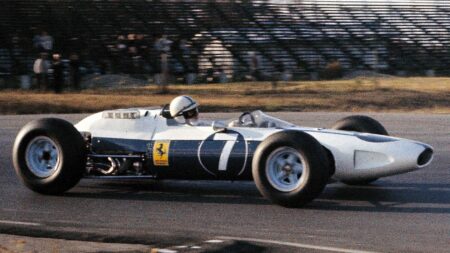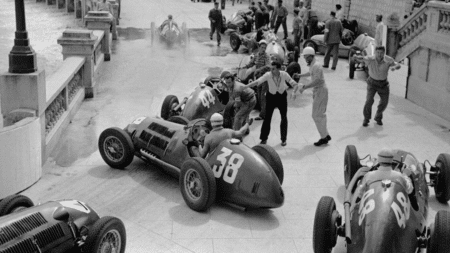It is slightly strange to think that one of Ferrari’s most-recognised models is more grand tourer rather than out-and-out supercar. Yet that is precisely the case with the Ferrari Testarossa.

Along with the Lamborghini Countach and the Porsche 959, the Testarossa was a defining shape of 1980s performance motoring and must be classed among Pininfarina’s best designs. Ferrari launched the car in France at the ’84 Paris Motor Show and though it looked aggressive and uncompromising, the Testarossa’s personality was less extreme than its styling.
Another stand-out car from that year’s Paris Motor Show was the Peugeot Quasar Concept. Had the Quasar been produced it too would be easily recognisable today. Disappointingly, the French concept was almost exclusively a styling exercise. But what a car it might have been. Its lines were just as striking as the Testarossa’s and placed behind its cabin sat a twin-tubro, 1.6-litre, 4-cylinder unit capable of 600bhp. Performance would have been wild and turbo lag comically severe but as the Ferrari F40 demonstrated three years later, that’s part of the fun.

The Testarossa had no such peaky power delivery. The 4.9-litre mid-mounted flat 12 was a creamy performer through the rev range and a direct relation of Niki Lauda’s Grand Prix engines during his stint at the Scuderia. Generating 390bhp at 6300rpm and 360lb-ft of torque at 4500rpm, the Testarossa did not require dizzying engine speeds to make rapid progress. Nor did this characteristic detract from the noise it made. The flat-12 emitted a fabulous metallic rasp as it built momentum through the gears.
The gearbox itself sat under the engine pushing the centre of gravity a little higher than was ideal. Ferrari compensated for this arrangement with a dry sump set-up which stole back some vital centimetres. The engine layout – timing belts positioned forward against the bulkhead – also meant that every belt change required the whole engine assembly to be dropped from the car. Fortunately, Ferrari designed the Testarossa with a sub-frame that unbolted from the chassis and fell easily (relatively speaking) out of the car. It is still a 30-hour job, mind.

Another interesting packaging feature of the Testarossa was its radiator positions – one located either side of the mid-mounted engine. Now a common arrangement on such cars, this layout was a departure from Ferrari’s previous 12-cylinder model, the Berlinetta Boxer. The BB, though mid-engined, used front-mounted radiators that made the cabin, on occasion, a very warm place to spend time. Moving the radiators behind the cabin improved driver comfort and also gave cause to one of the Testarossa’s defining features – its dramatic louvred vents.
The air intakes served a very practical function – engine cooling – but also lent the Testarossa the Italian flair and style so associated with the model. They also looked very, very fast.
Despite the sporting stance of the car, flick through an original Testarossa brochure and you will not see a racing circuit in sight. It was not intended to be a supercar in the mould of the F40 or LaFerrari: it was a super-cruiser if you will. The Testarossa was still massively quick but it didn’t sacrifice practicality in a single-minded attempt to shave hundredths of a second from its Fiorano lap time. Its front boot was generous, the air-conditioning system was very effective and visibility was excellent, for example.

From the archive: Ferrari 275 vs Testarossa (1987)
The Testarossa featured here was originally purchased from Ferrari Seattle by car enthusiast and Jaguar dealer George Beaudry in ‘88. Beaudry is said to have displayed this Rosso Corsa example in his Jaguar dealership for 18 years thereafter. It seems an odd marketing strategy to display a non-Jaguar in a Jaguar showroom but fantastic fun all the same.
Between Beaudry and the car’s subsequent two owners a total of 24,586 miles have been accumulated on the odometer. With the exception of its Tubi exhaust system, this Testarossa is a completely standard example of the breed. Available from Californian-based Fantasy Junction the car comes complete with an extensive service history, its original manual as well as a Ferrari branded took kit, luggage set and car cover.
As non-hybrid, 12-cylinder Ferraris become ever closer to extinction the appeal of the Testarossa will continue to rise. If you haven’t been invited to purchase the Ferrari F12 tdf, a low-milage Testarossa might just be the answer to the 12-cyclinder ownership dream.
Click here to visit this car’s classified page








